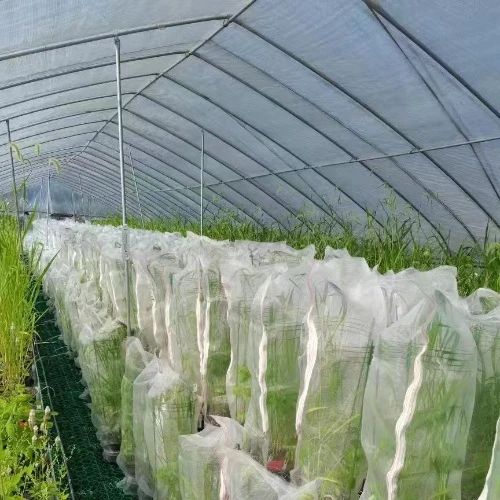-
 Afrikaans
Afrikaans -
 Albanian
Albanian -
 Amharic
Amharic -
 Arabic
Arabic -
 Armenian
Armenian -
 Azerbaijani
Azerbaijani -
 Basque
Basque -
 Belarusian
Belarusian -
 Bengali
Bengali -
 Bosnian
Bosnian -
 Bulgarian
Bulgarian -
 Catalan
Catalan -
 Cebuano
Cebuano -
 China
China -
 Corsican
Corsican -
 Croatian
Croatian -
 Czech
Czech -
 Danish
Danish -
 Dutch
Dutch -
 English
English -
 Esperanto
Esperanto -
 Estonian
Estonian -
 Finnish
Finnish -
 French
French -
 Frisian
Frisian -
 Galician
Galician -
 Georgian
Georgian -
 German
German -
 Greek
Greek -
 Gujarati
Gujarati -
 Haitian Creole
Haitian Creole -
 hausa
hausa -
 hawaiian
hawaiian -
 Hebrew
Hebrew -
 Hindi
Hindi -
 Miao
Miao -
 Hungarian
Hungarian -
 Icelandic
Icelandic -
 igbo
igbo -
 Indonesian
Indonesian -
 irish
irish -
 Italian
Italian -
 Japanese
Japanese -
 Javanese
Javanese -
 Kannada
Kannada -
 kazakh
kazakh -
 Khmer
Khmer -
 Rwandese
Rwandese -
 Korean
Korean -
 Kurdish
Kurdish -
 Kyrgyz
Kyrgyz -
 Lao
Lao -
 Latin
Latin -
 Latvian
Latvian -
 Lithuanian
Lithuanian -
 Luxembourgish
Luxembourgish -
 Macedonian
Macedonian -
 Malgashi
Malgashi -
 Malay
Malay -
 Malayalam
Malayalam -
 Maltese
Maltese -
 Maori
Maori -
 Marathi
Marathi -
 Mongolian
Mongolian -
 Myanmar
Myanmar -
 Nepali
Nepali -
 Norwegian
Norwegian -
 Norwegian
Norwegian -
 Occitan
Occitan -
 Pashto
Pashto -
 Persian
Persian -
 Polish
Polish -
 Portuguese
Portuguese -
 Punjabi
Punjabi -
 Romanian
Romanian -
 Russian
Russian -
 Samoan
Samoan -
 Scottish Gaelic
Scottish Gaelic -
 Serbian
Serbian -
 Sesotho
Sesotho -
 Shona
Shona -
 Sindhi
Sindhi -
 Sinhala
Sinhala -
 Slovak
Slovak -
 Slovenian
Slovenian -
 Somali
Somali -
 Spanish
Spanish -
 Sundanese
Sundanese -
 Swahili
Swahili -
 Swedish
Swedish -
 Tagalog
Tagalog -
 Tajik
Tajik -
 Tamil
Tamil -
 Tatar
Tatar -
 Telugu
Telugu -
 Thai
Thai -
 Turkish
Turkish -
 Turkmen
Turkmen -
 Ukrainian
Ukrainian -
 Urdu
Urdu -
 Uighur
Uighur -
 Uzbek
Uzbek -
 Vietnamese
Vietnamese -
 Welsh
Welsh -
 Bantu
Bantu -
 Yiddish
Yiddish -
 Yoruba
Yoruba -
 Zulu
Zulu
Innovative Strategies for Protecting Crops Using Hail Nets and Agricultural Technology
The Importance of Hail Nets in Modern Agriculture
In recent years, the impact of climate change has made unpredictable weather patterns increasingly common, especially in agricultural regions. One phenomenon that farmers frequently encounter is hail, which can cause devastating damage to crops in a matter of minutes. To combat this threat, many agriculturalists are turning to innovative solutions, one of which is the use of hail nets.
Hail nets are protective structures made from durable, weather-resistant materials that are designed to shield crops from hailstones. These nets are typically installed over fields or orchards, forming a barrier that absorbs the impact of hail and minimizes damage to the plants below. The significance of hail nets lies not only in their protective capabilities but also in their broader implications for agricultural sustainability and productivity.
Firstly, the installation of hail nets can significantly reduce the economic losses associated with hail damage
. In regions where hailstorms are frequent, the cost of damages can be substantial, affecting not just the current year’s harvest but also long-term crop viability. With hail nets in place, farmers can safeguard their investments, leading to more stable income and, consequently, enhanced food security.hail nets

Moreover, hail nets serve a dual purpose beyond just protecting crops from hail. They can also provide shade, helping to shield plants from extreme temperatures and reducing water evaporation during hot summer months. This can be particularly beneficial in regions where water scarcity is a pressing concern. Additionally, the shade created by hail nets can improve the microclimate for certain crops, promoting healthier growth and potentially increasing yields.
Another significant advantage of using hail nets is that they can act as a barrier against other environmental threats. For instance, they can deter birds and insects, which are often detrimental to crops. This helps reduce the dependence on chemical pesticides, promoting a more organic approach to farming that is better for both the environment and consumers.
The installation of hail nets is not without its challenges, however. Farmers often need to weigh the initial costs of purchasing and setting up these structures against the potential economic benefits. Additionally, maintenance and durability are important considerations; nets must be resilient enough to withstand not just hail impacts but also wind, rain, and sun exposure over time.
In summary, hail nets represent a proactive approach to modern agricultural challenges. By providing essential protection against hail and additional environmental benefits, they can enhance crop resilience, improve economic stability for farmers, and promote sustainable farming practices. As agriculture continues to adapt to the effects of climate change, the adoption of such innovative solutions will be key to ensuring food security and sustainability for generations to come. Embracing the use of hail nets may just be one of the important steps in aligning agricultural practices with the needs of a changing world.
-
Shipping Plastic Bags for Every NeedNewsJul.24,2025
-
Safety Netting: Your Shield in ConstructionNewsJul.24,2025
-
Plastic Mesh Netting for Everyday UseNewsJul.24,2025
-
Nylon Netting for Every UseNewsJul.24,2025
-
Mesh Breeder Box for Fish TanksNewsJul.24,2025
-
Expanded Steel Mesh Offers Durable VersatilityNewsJul.24,2025











